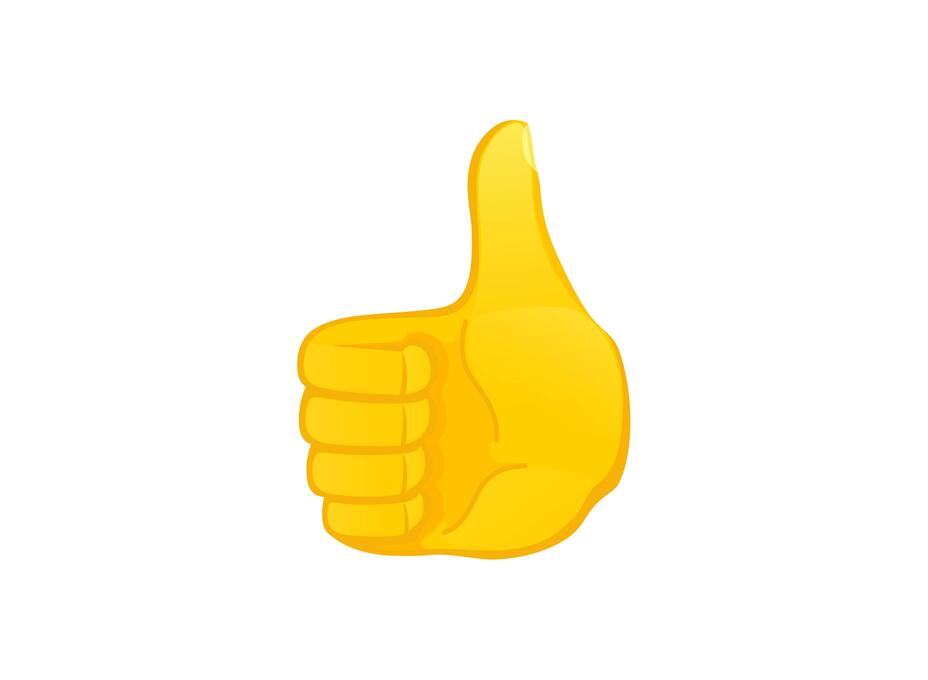Gen-Z Doesn’t Like the ‘Passive-Aggressive’ Thumbs Up Emoji
Generation Z often surprises older generations with its unique perspectives and behaviors. While many of these traits might be puzzling, understanding them can help bridge the generational gap. One such example is how Gen-Z perceives the seemingly harmless thumbs-up emoji.
For older generations, the thumbs-up emoji is typically seen as a positive or affirming gesture. However, for many young people in Gen Z, it has taken on a new meaning and is often viewed as “passive-aggressive.” Some even find it to be “triggering” or uncomfortable.
A Gen-Z individual, who recently entered the workforce, shared their experience in a post. They explained how their workplace uses Microsoft Teams for communication, where employees rely heavily on emojis to react to messages. The thumbs-up emoji, in particular, is commonly used, but the poster expressed discomfort with it. “I don’t use it much,” they said, opting instead for more expressive reactions like a heart or a brief reply. “I think it’s normal to use the thumbs-up, but I still find it unsettling,” they added, asking others if they felt the same way.

One commenter, who is 24, confirmed the feeling, stating, “For younger people, the thumbs-up emoji is often seen as passive-aggressive.” Another person suggested that it might feel impersonal, adding, “You seem like someone who prefers more genuine interactions, which is probably why the thumbs-up feels off.”
It’s clear that the thumbs-up emoji carries different connotations for Gen Z compared to older generations. What once seemed like a harmless, neutral symbol now has a more complicated and sometimes negative meaning for younger people. What do you think of this shift in how we interpret emojis? Feel free to share your thoughts in the comments and pass this along to others who might be interested.
In conclusion, the evolving perception of the thumbs-up emoji among Gen-Z highlights a larger trend in how digital communication is constantly shifting, especially across generational lines. What was once considered a universally positive gesture has, for many in Generation Z, transformed into something that can feel impersonal, dismissive, or even passive-aggressive. This shift in emoji usage is reflective of a broader desire for more genuine, personalized communication, something that younger generations increasingly prioritize in their interactions.
The discomfort some Gen-Z individuals feel when encountering the thumbs-up emoji is a reminder of how quickly digital communication norms can change. Emojis, which are often meant to simplify and enhance communication, can take on unintended meanings depending on context, user preferences, and cultural shifts. For older generations, the thumbs-up might still seem like an innocuous or even supportive gesture, but for younger people, it may evoke feelings of distance or lack of sincerity.
This generational divide in emoji interpretation emphasizes the importance of understanding how different groups engage with technology and social media. As digital communication continues to evolve, it’s likely that new symbols and meanings will emerge, and what is considered a friendly or casual response today may not hold the same significance tomorrow. It serves as a reminder that, in the age of rapid technological advancements, even the simplest gestures can have a layered, nuanced impact depending on the perspective of those involved.
![]()
Ultimately, the thumbs-up emoji’s changing significance is a fascinating example of how communication practices are constantly adapting. Whether it’s through a shift in emoji preferences or a change in tone, what we convey through digital platforms continues to be an ongoing conversation. So, as we navigate these new communication norms, it’s important to stay open to the evolving ways people express themselves and to be mindful of how our words and gestures are received.

















